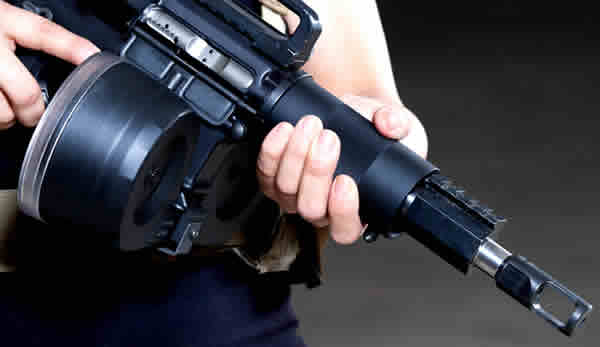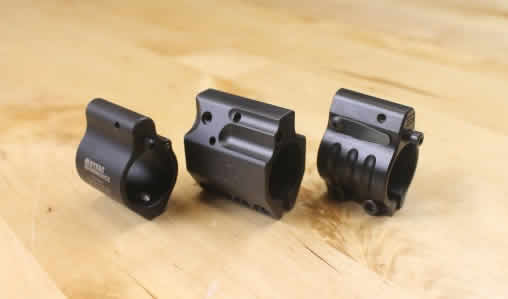
Dialed In
[su_heading size=”30″]Modern range finders, scopes and custom turrets make it simpler than ever to shoot accurately out to long ranges.[/su_heading]
STORY AND PHOTOS BY BRAD FITZPATRICK
[su_dropcap style=”flat” size=”5″]T[/su_dropcap]he aoudad were camouflaged in the dry grass and rocks above us, but there was no way to stalk any closer to the herd in the barren west Texas landscape. It had already been a difficult hunt, with lots of vertical climbing in the heat of the day. The band had several sentinels, and these sharp-eyed young sheep hung back behind the rest of the herd watching our position. If we were going to get a shot, it would have to be right at that moment, and from right where we were positioned.
The ram we were looking for was near the back of the herd, grazing and totally unaware of our presence. I asked for the distance and my hunting partner – Ben Frank of Browning Ammo – called back to me that it was 277 yards. With a normal scope, that would mean accounting for the drop and holding somewhere above where I wanted the bullet to strike. But with the Leupold VX-3i scope with CDS turrets I had another option.

Based on the load and the accompanying chart I had printed with the trajectory for my .30-06, I knew that I needed a 1¾ minute-ofangle elevation adjustment to be dead on-target at 275 yards. Simple enough. I turned the dial, held right where I wanted the bullet to strike, and pressed the trigger on the rifle. There was a crack and a thump, and even in the recoiling scope I could see that the ram was hit hard. He went down within 20 yards.

A FEW YEARS AGO, hunters and shooters faced a challenge when they sought to extend their effective range. The serious long-range equipment of a few years ago required some knowledge of milradians and MOAs, and relatively few had a good grasp on how to range targets and make windage and elevation adjustments in the field.
But as new laser rangefinders hit the market, that process became simplified. Suddenly, it was easy to know how far away a target was, but there was still the matter of hitting that target.
Scope makers also did their part to help simplify tough shots. Today, most scope companies offer custom turrets that are precisely cut to your own specifications for your load based on a variety of factors (bullet weight, velocity, altitude, and more). Nikon offers their Spot On turrets, Leupold their CDS (Custom Dial System) versions, and there are many, many more. And, if the optics company doesn’t provide custom turrets, custom builders such as Kenton Industries will fill the void.
The advantage of a custom turret is that you no longer need to cheat the scope up and guess holdover. Many shooters do just that because, frankly, that’s what they’ve always done, trusting rough estimation more than the wizardry of custom scope knobs. However, if your scope does its job, your turrets are properly cut and you’re using the right load in the rifle, you’ll be amazed at just how accurate these turrets really can be.
For example, on the Browning hunt mentioned above, some of our scopes had turrets cut the particular load we were using, and all we required was a range estimation to quickly get on target. After that, it’s simply a matter of turning the dial to the correct range and pressing the trigger. And, if you want to change loads, most turrets are easily removable.

EVEN IF YOU AREN’T CERTAIN about which loads you will be using, that’s not a problem. There are a variety of phone and tablet apps that take your data and develop a custom trajectory curve. You can then enter this information and it will relate your elevation adjustment. You can also print out this info in advance for multiple loads and keep it on a range card in your pocket or taped to the stock of your rifle. This method is especially useful if you will be traveling to country where you will have no cell service.
By using a ballistic calculation system, you can quickly adjust to the current conditions and match your rifle’s load exactly. It may sound complicated, but it really isn’t. The digital age has helped consumers understand how to input data in fields, so typing in your bullet’s ballistic coefficient is really no different than typing in your address when you purchase an item online. This ballistic data will give you an elevation and windage adjustment, and you can simply dial this into your scope using the turrets.

Need 2.25 MOAs of elevation adjustment? Simply turn the elevation knob on your scope. A half MOA of wind? Make that adjustment, too, and simply hold where you want the bullet to strike. There’s no specific brand of scope that is tied to these applications, so regardless of whether you have a Trijicon, Leupold, Bushnell, Nikon, Zeiss or other optic, one MOA is equal to one MOA – provided, of course, your scope is calibrated correctly.

What these turrets – and learning to use them – eliminate is the need to guesstimate and hold over game. If you’re planning on using the “hold a little higher on the shoulder” principle, that’s fine, and there are hunters who don’t ever plan on taking game or ringing targets outside of a couple hundred yards.
But if you want to extend the potential range of your firearm to a quarter mile or more, the notion of holdover begins to fall apart, shots become inaccurate and game suffers. I’ve known a lot of hunters who were hesitant to use turrets to dial for long shots, but once you understand how the process works, it’s no more complex than operating a remote control or programming a cell phone – provided, of course, you know how to handle your rifle, know your loads and have mastered basic shooting skills.
Using custom turrets is an inexpensive way to shoot accurately at longer ranges, and new technology has effectively reduced the learning curve for those new to long-range shooting. You should never shoot beyond your limits, always respecting the game and doing absolutely everything possible to ensure a clean kill, but new dial technology on scopes has made it easier than ever for you to be a better shooter. ASJ




